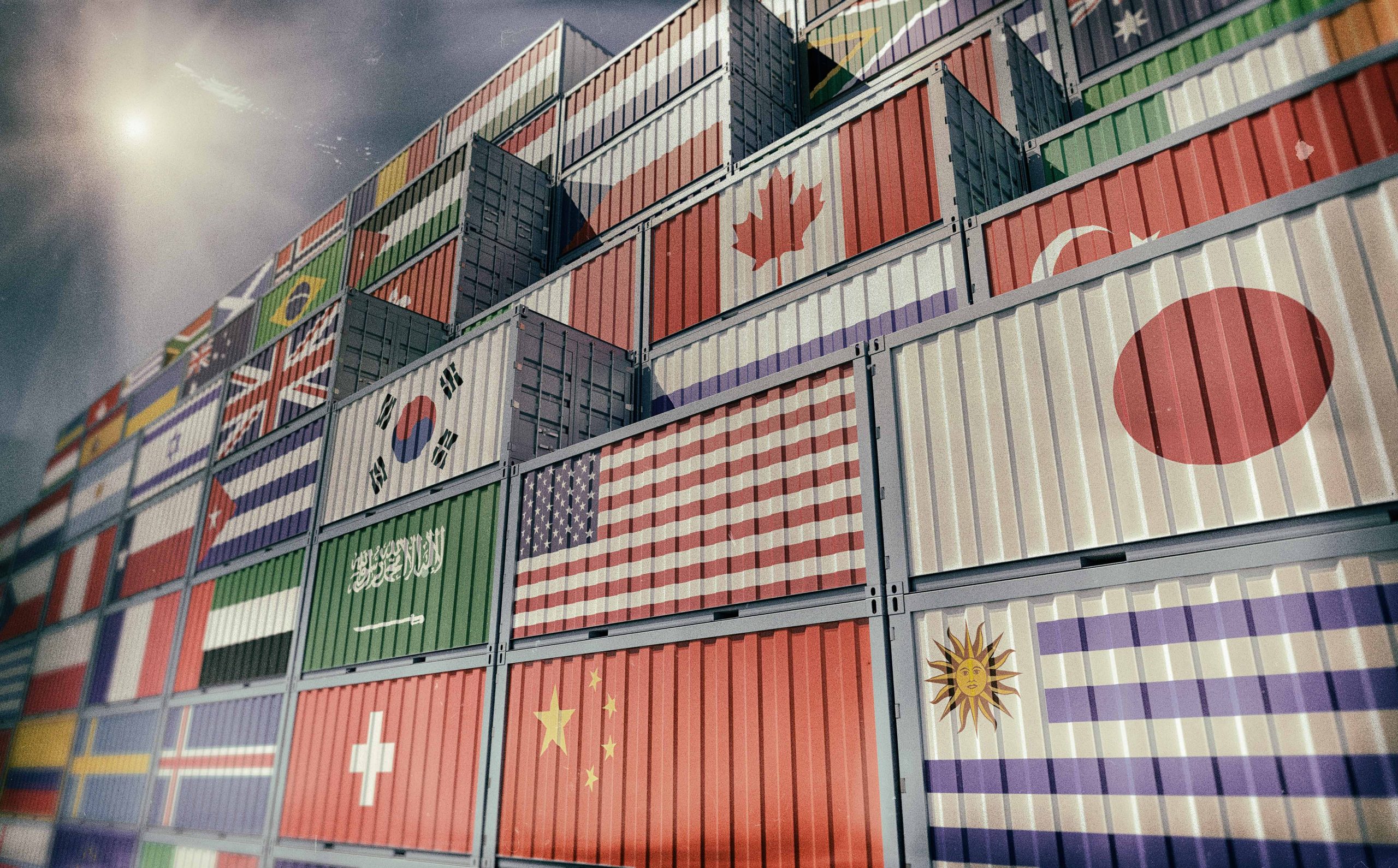Exploring the World of Garlic: A Closer Look at Its Global Import Market
Exploring the World of Garlic: A Closer Look at Its Global Import Market
Welcome to the fragrant world of garlic! Whether you sprinkle it on your favorite pasta dish or use it as a secret ingredient in your grandma’s famous marinade, there’s no denying that this small bulb packs a powerful punch. But have you ever wondered where all the garlic in your kitchen comes from? Join us as we dive deep into the global import market of this versatile culinary staple. From China’s dominance to Spain’s aromatic varieties, get ready to embark on a flavorful journey across continents and uncover fascinating insights about the fascinating world of garlic!
Introduction to Garlic: History and Cultivation
Garlic, also known as Allium sativum, has been a staple ingredient in cuisines all around the world for thousands of years. This pungent bulb not only adds flavor to dishes but also boasts numerous health benefits and has been used in traditional medicine for centuries.
The history of garlic dates back to ancient times, with evidence of its cultivation found in archaeological sites dating as far back as 5,000 years ago. It is believed that garlic originated in Central Asia and spread to other parts of the world through trade routes. The ancient Egyptians were one of the first civilizations to cultivate garlic for both culinary and medicinal purposes. It was highly valued by them and was even used as currency in some regions.
In Greek and Roman cultures, garlic was also highly regarded for its medicinal properties. Hippocrates, known as the father of modern medicine, prescribed it for various ailments such as respiratory infections and digestive issues. In fact, garlic was so revered that Olympic athletes would eat large quantities of it before competitions in belief that it would enhance their performance.
As explorers traveled around the world during the Age of Discovery, they introduced garlic to different regions such as Europe and Asia. It quickly became popular due to its strong flavor profile and versatility in cooking. Today, China is the largest producer of garlic followed by India and South Korea.
The Global Demand for Garlic: Statistics and Trends
The global demand for garlic has been steadily increasing in recent years, making it one of the most sought-after crops in the international market. Garlic is a staple ingredient in many cuisines around the world and has also gained popularity for its numerous health benefits. In this section, we will delve into the statistics and trends that drive the global demand for garlic.
Statistics:
Garlic is produced in over 150 countries worldwide, with China being the largest producer, accounting for more than 80% of the total global production. According to data from FAOSTAT, over 26 million tonnes of garlic were produced globally in 2019, with a trade value of over $5 billion. The top importers of garlic are the United States, France, Germany, and Japan.
Trends:
1. Increasing Consumption: One of the main factors driving the global demand for garlic is its rising consumption. As people become more health-conscious and seek natural remedies to boost their immune system and fight diseases like colds and flu, they are turning towards ingredients like garlic known for their medicinal properties.
2. Growing Use in Cooking: Garlic has long been used as a flavor-enhancing ingredient in cooking but its versatility has made it an essential component in various culinary dishes worldwide. With an increasing interest in diverse cuisines globally, there has been a rise in demand for garlic as an important ingredient.
Top Producing Countries of Garlic
Garlic, one of the most widely used ingredients in cooking and traditional medicine, is an essential crop that is grown all over the world. With its distinctive pungent flavor and numerous health benefits, it has become a staple in many cuisines and cultures. In this section, we will take a closer look at the top producing countries of garlic and how they play a significant role in the global import market.
1. China
China is by far the largest producer of garlic in the world, accounting for approximately 80% of global production. The country has been growing garlic for centuries and has perfected its cultivation techniques over time. Its favorable climate, fertile soil, and advanced farming practices have enabled China to produce high-quality garlic year-round.
The majority of Chinese garlic is grown in Shandong province, known as the “Garlic Capital” of China. It produces more than half of the country’s total garlic output. Other major producers include Henan, Jiangsu, Hebei provinces.
2. India
India is another significant player in the global garlic market, with an annual production rate exceeding two million tons. The country’s diverse agro-climatic conditions make it suitable for cultivating different varieties of garlic throughout the year.
Madhya Pradesh is India’s leading producer of garlic followed by Gujarat and Rajasthan. Indian garlic has gained popularity globally due to its unique taste and aroma.
Major Importers of Garlic: Who’s Buying and Why?
Garlic is a widely popular and versatile ingredient used in various cuisines around the world. With its distinctive flavor and numerous health benefits, it’s no wonder that garlic has become a staple in many households. But have you ever wondered where all this garlic comes from, and who are the major importers of this pungent bulb?
The global demand for garlic has been steadily increasing over the years, leading to a rise in its production and trade. According to data from the Food and Agriculture Organization (FAO), China is by far the largest producer of garlic, accounting for over 80% of the world’s total production. However, despite being the top producer, China also happens to be one of the major importers of garlic.
So who are the other top importers of garlic and why do they rely on imports? Let’s take a closer look at some of these countries.
1. United States: The United States is one of the biggest consumers of garlic globally, with an estimated annual consumption of over 400 million pounds. However, due to its climate conditions and limited domestic production capacity, the US heavily relies on imports to meet its demand for fresh and processed garlic products. In 2019 alone, the US imported over $220 million worth of fresh or chilled garlic from various countries.
Challenges in the Import Market for Garlic
The import market for garlic is a complex and dynamic industry, with many challenges that must be faced by both importing countries and garlic producers. In this section, we will take a closer look at some of the key challenges that are currently being faced in the global import market for garlic.
1. Fluctuating Prices:
One of the biggest challenges in the import market for garlic is its volatile pricing. The price of garlic can vary significantly depending on various factors such as weather conditions, supply and demand, production costs, and currency exchange rates. This makes it difficult for importers to accurately predict and plan their purchases, resulting in potential losses if they buy at high prices or missed opportunities if they wait too long.
2. Quality Control:
Another major challenge in the import market for garlic is ensuring consistent quality control. As garlic is a perishable commodity, it is essential to maintain strict quality standards throughout its journey from producer to consumer. However, due to varying regulations and inspection processes in different countries, maintaining consistent quality can be challenging.
3. Competition from Domestic Production:
Many countries have their own domestic production of garlic which can pose a significant competition for imported garlic. These domestic producers may have lower production costs or government subsidies that enable them to sell at lower prices than imported products. This creates an uneven playing field for international suppliers and increases the difficulty for them to enter certain markets.
Benefits of Imported Garlic for Consumers
Garlic is a widely popular and versatile ingredient used in many cuisines around the world. While it can be grown locally, there are also many benefits to consuming imported garlic. In this section, we will explore some of the key benefits of imported garlic for consumers.
1. Availability and Variety:
One of the biggest advantages of imported garlic for consumers is its availability and variety. As the global demand for garlic continues to rise, importing it from various countries ensures a steady supply throughout the year. This means that consumers can access fresh garlic even during off-seasons when local supplies may be limited.
Moreover, importing garlic from different countries also allows for a wider selection of varieties. Each region has its own unique type of garlic with distinct flavor profiles and characteristics. By importing these varieties, consumers have access to a wider range of options to choose from and experiment with in their cooking.
2. Quality Standards:
Imported garlic often undergoes strict quality control measures before being exported to other countries. This ensures that only high-quality produce reaches the consumer’s table. Many importing countries have stringent regulations on food safety and quality standards, which helps ensure that the imported garlic is free from harmful chemicals or contaminants.
3. Cost-Effective:
While it may seem counterintuitive, imported garlic can actually be more cost-effective for consumers compared to locally produced ones. Due to lower labor costs and favorable climate conditions in some countries, they are able to produce garlic at a lower cost than other regions.
Sustainable Farming Practices in the Garlic Industry
In recent years, the agricultural industry has faced increasing pressure to adopt sustainable practices in order to reduce its environmental impact and ensure long-term viability. This is especially true for the garlic industry, as it is one of the most widely consumed crops globally and plays a significant role in many countries’ economies.
Sustainable farming practices refer to methods that aim to minimize the negative effects of agriculture on the environment while still maintaining productivity and profitability. In the garlic industry, these practices include using organic fertilizers and pesticides, implementing crop rotation techniques, conserving water resources, and reducing greenhouse gas emissions.
One major concern in conventional garlic farming is the use of chemical fertilizers and pesticides. These chemicals can not only harm beneficial insects and pollinators but also contaminate soil and water sources. To combat this issue, many farmers have started incorporating organic methods into their production processes. This involves using natural fertilizers like compost or manure instead of synthetic ones, as well as utilizing biological pest control methods such as introducing beneficial insects or using neem oil sprays.
Another important aspect of sustainable farming in the garlic industry is crop rotation. Growing garlic year after year on the same land can deplete soil nutrients and increase susceptibility to diseases and pests. By rotating crops with different nutritional needs, farmers can maintain soil health and reduce reliance on synthetic fertilizers.
Innovative Uses of Garlic Beyond Cooking
In addition to being a staple ingredient in countless dishes around the world, garlic has been used for centuries for its medicinal properties. However, there are also many innovative and unexpected uses of garlic beyond cooking that have emerged in recent years. From beauty treatments to insect repellent, let’s take a closer look at how this humble herb is being utilized in unique and creative ways.
1. Natural Medicine
Garlic has long been known for its immune-boosting and healing properties. It contains high levels of antioxidants and sulfur compounds that help fight off bacteria, viruses, and fungi. In traditional medicine systems such as Ayurveda and Chinese medicine, garlic is used to treat various ailments such as colds, flu, digestive issues, and even high blood pressure. Studies have also shown that consuming garlic regularly can help reduce the risk of heart disease and certain types of cancers.
2. Skin Care
The antibacterial and anti-inflammatory properties of garlic make it an effective ingredient in natural skin care products. Crushed garlic can be applied directly onto acne-prone areas to reduce inflammation and kill bacteria causing breakouts. It is also said to improve skin texture by boosting collagen production when consumed or applied topically.
3. Hair Care
Garlic is rich in vitamins C, B6, and minerals like calcium, copper, iron which promote healthy hair growth. Many commercial hair care products now include garlic extracts or oil as an active ingredient due to its ability to strengthen hair follicles and prevent hair loss.
Conclusion: The Future of the Global Garlic Market
Conclusion: The Future of the Global Garlic Market
As we have seen in this exploration of the global garlic market, there are many factors at play that shape its current state and will continue to influence its future. From changing consumer preferences to climate change, the global demand for garlic is constantly evolving.
The future of the global garlic market looks bright as it is expected to witness significant growth in the coming years. According to a report by Grand View Research, Inc., the global garlic market size was valued at USD 17.7 billion in 2020 and is projected to reach USD 29.4 billion by 2028, growing at a CAGR of 6.5% during the forecast period (2021-2028).
One of the key drivers of this growth is the increasing awareness about the health benefits of garlic among consumers. As people become more health-conscious, they are turning towards natural foods like garlic for their medicinal properties. Garlic has been used as a traditional remedy for various ailments such as high blood pressure, cholesterol, and even cancer.
Furthermore, with growing concerns about food safety and quality assurance, there is a rising demand for organic produce including garlic. This trend is expected to boost the overall sales of organic garlic in both developed and developing countries.








Comments are closed.